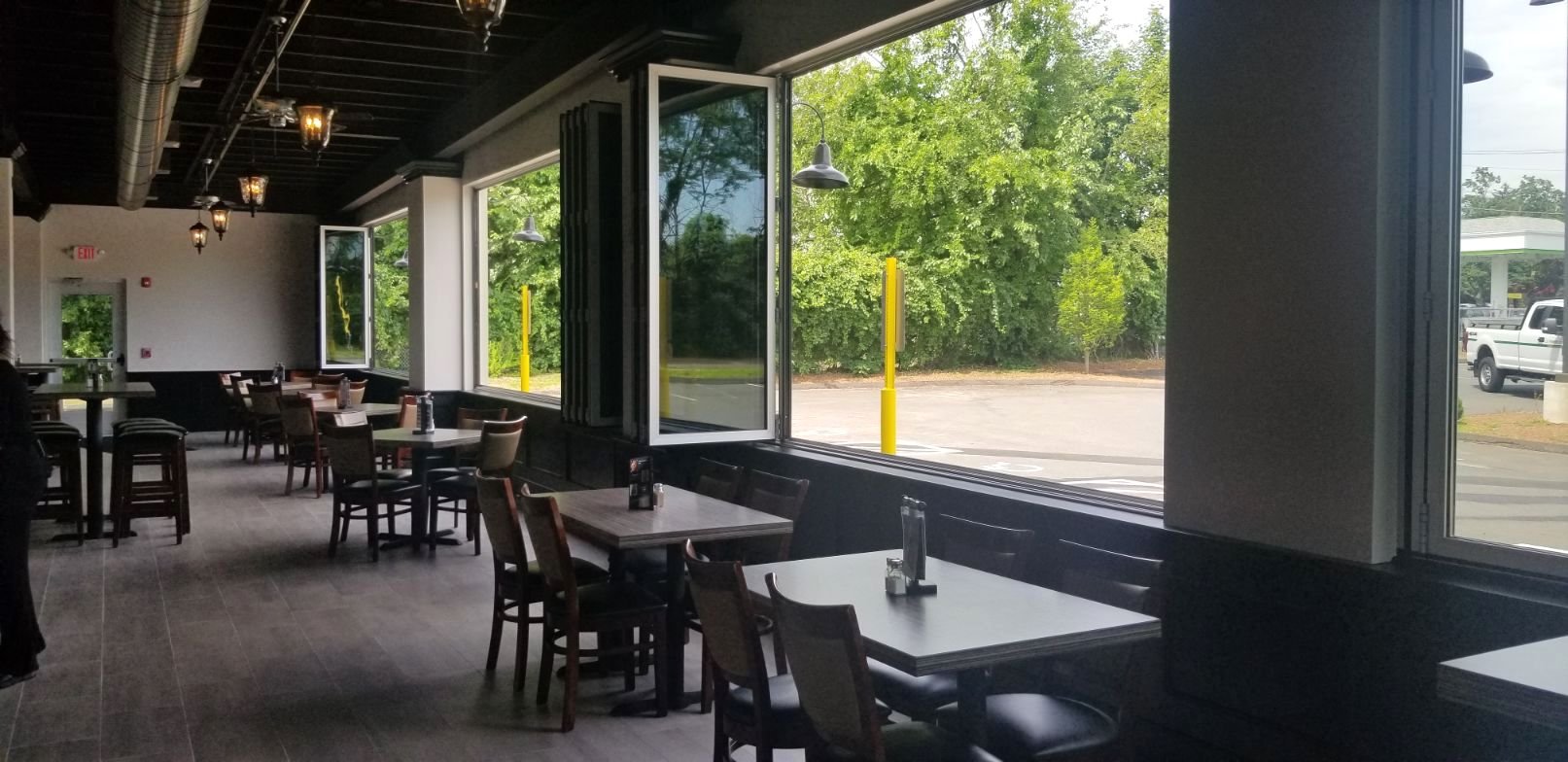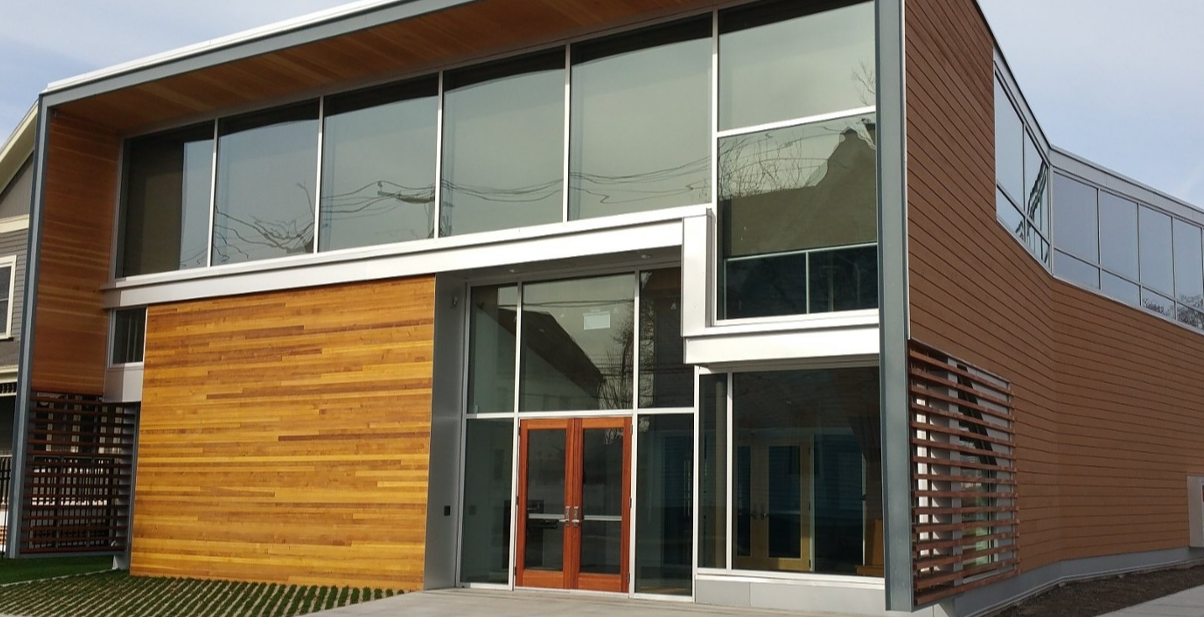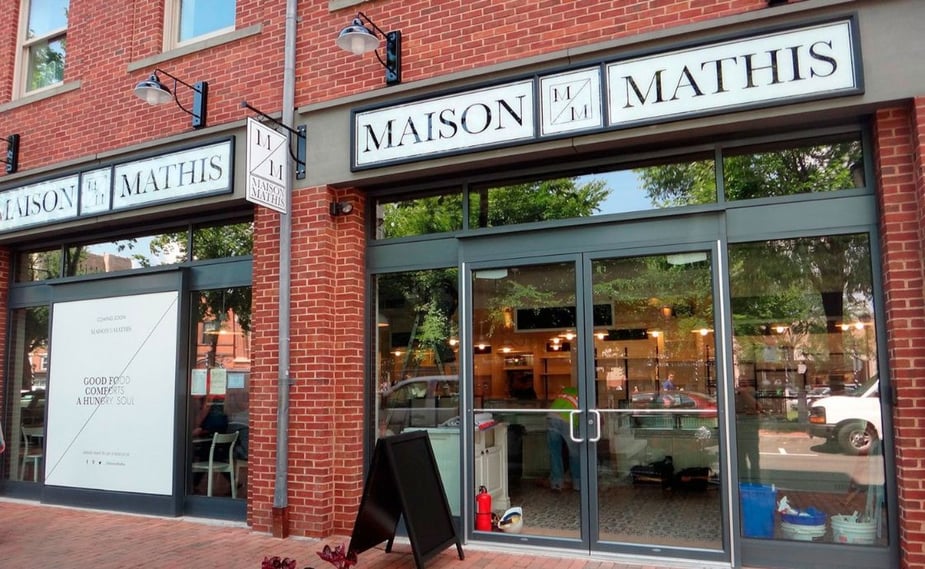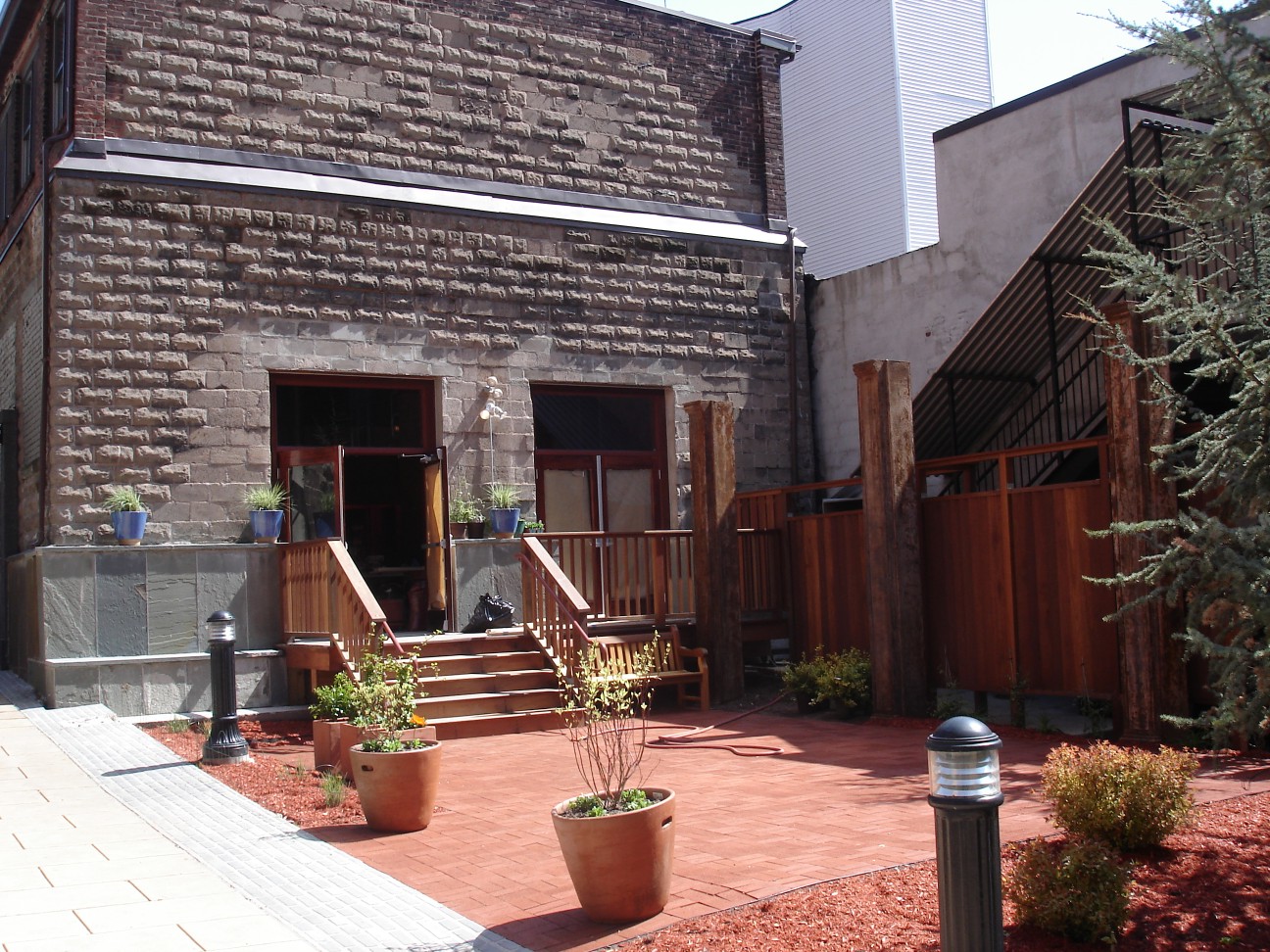Everything Commercial Building Owners Need To Know When Considering a Construction Project
Kevin Ahern, principal contractor and co-founder of Litchfield Builders, Inc., founded the company with his brother, Jim Ahern, over 20 years ago. From the start, they quickly became a leading company in New Haven County through their high-quality work and their top, personal service to create lasting living and working spaces. By going above and beyond handling issues that contractors usually don’t, the Aherns cement a client relationship that lasts well beyond the pounding of the last nail.
Commercial building remodeling is a big undertaking for any property owner. It’s so big that many will only go through a major remodel once or twice in their lifetime. When the remodel begins, many property owners don’t know what to expect. Being informed can help make a remodel or upgrade less stressful and more worthwhile. Doing research and working with top commercial general contractors is important.
Done right, commercial renovation delivers high ROI while improving property value. Working with an experienced contractor, maintaining good communication throughout the project, and working carefully together through the planning stages can help make your project a success.

Do you want access to all of this information at your fingertips?
Simply fill out the form on this page to download this guide as a PDF, and read it anytime.
Commercial building remodeling helps businesses stay relevant and functional. Buildings deteriorate quickly when they’re not maintained. As fixtures become inefficient and break down, repairs become critical. Buildings that do not get the maintenance they need when they need it may someday become too difficult or expensive to repair.
Every commercial remodel is different, but in general, a typical commercial construction project will proceed like this:
Once you’ve signed a contract with a reputable professional, your contractor should be able to walk you through the stages of construction. The contract itself should explain a lot about how the construction project will proceed. In addition, your contractor may have a publication or guide that will help you understand the remodeling process.
Business may not have to stop while the remodel takes place. Contractors can work in shifts before or after customers arrive, on weekends when the business is closed, or behind curtains, while business is conducted as normal.
The ways in which the construction is handled depends on the type of business being remodeled, expected noise levels, indoor air quality, and other factors. If the changes being made are dramatic, the business may need to shut down for all or part of the time. Property owners must be aware that choosing to keep business going may draw out the process, and complications can arise when contractors and customers are in the same place at the same time.
Sometimes, businesses choose to move locations temporarily while the remodel is happening. This is one way to keep business going while conducting the remodel safely. Talk to your contractor to find out your options and decide what is best for you.
Overall, commercial remodeling has many benefits. Although remodeling projects happen only occasionally, businesses get a big boost from making improvements.
It’s important for businesses to optimize their use of space. Installation of custom cabinetry, reshaping or redesign of an attic or storage area, and even redesign of offices and cubicles are ways that a commercial renovation project can free up space in the office.
Previous
Next

Cosmetic improvements should be performed on a regular basis to prevent a building from looking dated or poorly maintained.
Typically, these improvements will be minor, but every so often, dramatic action must be taken. This may include replacing the flooring, painting the walls, installing modern light fixtures, replacing dated furnishings and so on.
Previous
Next

Sustainability and efficiency have become very important in recent years, but this was not always the case.
Older fixtures and older buildings tend to be less efficient because these structures were not designed with efficiency in mind. Remodeling is an excellent opportunity to improve efficiency and sustainability.
Previous
Next

When companies go through rebranding, one of the first things they typically do is change the look and feel of their workspace. Matching the look of the business to the brand is one way that companies spread and reinforce their message.
Previous
Next

Older buildings are often unsafe in various ways, because they do not meet modern safety standards. Many companies remodel to improve the safety of their workers and customers. This is a good way to prevent accidents in the workplace.
Previous
Next

The type of commercial property renovation you perform will depend on the type of building that you own as well as your commercial remodeling goals.
Green appliances help property owners save money while also preserving the environment. Energy efficient upgrades span a range on the type of structure that’s being renovated. Cool roofs, geothermal HVAC systems, and double-pane low-E windows are all modern features that help property owners save money on utilities.
Many restaurants must be renovated every few decades, to keep their business looking fresh and up to date. Without regular remodeling, dining spaces can start to look worn down and kitchen appliances may break down more often than is necessary.
Standard commercial roofs can last between 20 and 50 years, depending on the type of roof and other factors. Commercial roofs should be inspected on a regular basis, and maintenance should be performed as needed. When the wear and tear on the roof becomes substantial, this is when a re-roof may be necessary.
Office kitchens can become difficult to clean and hard to maintain as they get older. Remodeling can make kitchens more functional and attractive, with updated cabinetry, fixtures and more. This is also an excellent opportunity for business owners to save money on utilities, by installing ENERGY STAR rated appliances.
ADA laws require businesses to provide accommodations for individuals with disabilities. This may involve installing a ramp, widening doorways, changing cubicle spaces and others.
Decades ago, standard offices comprised a series of cubicles and individual offices. Today, open office spaces are more common. In these spaces, staff and managers work side by side at desks. Open offices are said to promote collaboration among colleagues and equality between staff and management.
Office restrooms have changed a lot in the last several decades. With the popularization of low-flow and touchless fixtures, many businesses are doing what they can to upgrade and modernize their restrooms. Installing these new fixtures can save water and prevent the spread of germs.
When the time comes to get a commercial remodel, the signs can be obvious or subtle. As a commercial property owner, you can keep your eye out for the warning signs by inspecting your property regularly, getting feedback from clients and employees, and by working with your property management company (if you have one). The signs that it's time for a commercial remodel can vary depending on the type of property you own.
Office buildings wear down with use. Carpeting can become worn, and HVAC systems can get old and finicky. Over time, offices can also become cluttered or cramped as companies grow. Often, the desire to remodel comes as much from changes within the company as from the need to make repairs. Signs to watch for include:
Restaurant staff stay in constant movement as they cook food, clean dishes and serve customers. Proper layout is critical to ensure that queues are kept out of the way and staff can move freely from one place to another.
Restaurants can also become hot and muggy if the exhaust or HVAC system is in poor condition. Keeping appliances and fixtures up to date is critical for ensuring that cooking procedures continue to be efficient and restrooms are kept clean.
Schools must grow with the surrounding population, and academic buildings get hard use from students. Floors in these buildings can wear quickly. While schools for younger children often focus on maintaining facilities like the bathrooms and cafeteria, universities also focus on maintaining beauty of prestigious buildings. Remodels for academic buildings can vary quite a bit, depending on the type of school and students. Signs your academic building needs remodeling includes:
Retail stores need to look and feel their best, to ensure that customers can be comfortable while shopping. Maintaining appearances is very important for retail structures. Installing durable flooring can help, but remodeling to make cosmetic improvements is a common project for retail locations. Signs to watch for:
Manufacturing and industrial sites are generally tailored to the tenant that occupies the space. When one tenant leaves, the space may need to be remodeled to fit the needs of the new tenant. In addition, manufacturing sites need constant repair because they’re in regular use by workers. Mechanical fixtures must be repaired regularly. Below are the signs that it’s time to hire an industrial building contractor :
For more resources on determining when your commercial property in Connecticut needs to be remodeled, see our previous post on the subject.
If you’re considering remodeling your commercial space, here’s what you can expect.
Your commercial construction experience will begin when you recognize a need for repair, renovation or remodel. This could happen when you notice water damage for the first time, see a spike in repair costs, or staff begins to grumble that the office space is out-of-date.
Most business owners start their project by contacting either a contractor or an architect. Architects help with the design aspect of a remodel. If no redesign of the property is necessary, a contractor is a better starting point.
For example, if you wanted to redesign your building’s first floor, you would contact an architect. If you wanted to repair your building’s roof, replace your fixtures, or install new plumbing, then you would contact a contractor.
For example, a Design-Build Contractor offers all services in one. Some contractors are known as design-build contractors, which means they provide design services in-house. These contractors are one-stop shops for all clients seeking design services and remodeling or repair.
Hiring the right team is important. Here’s what you can do to vet your professionals before signing a contract:
Your contractor should have completed projects that were similar to yours. Ask your contractor for references for some of those past projects. This is a good way to find out how your contractor handles the kind of work that you’ll be hiring them to do.
In the state of Connecticut, contractors are required to have a license. Each contractor you interview for the project should be able to tell you their contractor license number. Once you have the number, check their license status online.
Their license should be active, and the name of the company should match the name registered on the license.
Connecticut contractors must have an active insurance policy in order to have a license. However, some contractors have more coverage than others. Ask each contractor about their level of insurance to compare the level of protection that each contractor offers.
You’ll need to have good communication with your contractor in order to get through your project. Meet with each professional in person to ask them questions and gauge their ability to communicate. Look for a contractor who understands your needs and who can answer your questions clearly.
Many of the best contractors post their portfolio online for consumers to see. Take a look at each contractor’s portfolio to decide which contractor’s style best matches the look you’re trying to achieve.
In Connecticut, construction projects begin with a contract. A standard contract should contain the following:
Have your lawyer review the contract, and read it yourself to ensure that you’re comfortable with the terms. Do not begin work on the job until all parties have signed.
Before construction work can begin, the property may need to be prepared for the contractor’s arrival. For example, you may need to remove overgrown landscaping to ensure access to the structure’s exterior, or set aside parking spaces for contractor vehicles. Preparations like this should be noted in the contract.
On the day the contractor arrives, know who is on site, who to speak to for updates and questions, and what hours the workers will be there.
Noise levels may vary. The City of New Haven has strict noise ordinances for construction work. If you’re inside the city limits, it’s important to work with a contractor who is familiar with these ordinances to avoid fines.
Businesses that remain active while construction is taking place may need to make adjustments based on the anticipated noise. The same is true of the power and water, as sometimes the utilities must be turned off for brief periods during construction. Working with your contractor to establish a timeline can help ensure that you’re prepared for these problems.
Once the work is finished, the contractor will usually do a final walk-through to discuss results and talk about any finishing touches yet to be done. This is your chance to ask questions and raise concerns if there are any. Waiting to ask questions or point out problems could lead to issues down the road, so speak up if you see something that needs to be addressed.
Remodeling projects happen in phases. No matter what type of work is being done, the phases are predictable.
The preparation and pre-construction phase consists of planning, drawing, and sampling of materials. Typically this is about 10% of the overall construction process, but sometimes, the planning phases are years in the making.
During this time, the property owner collaborates with other investors, stakeholders, designers and contractors to create a successful design.
To begin this phase of your project, create your commercial renovation goals. Knowing your primary goals and making a commercial renovation checklist will help you set priorities.
Your construction project will consist of many choices, and these choices will be made easier if you know what you’re trying to accomplish. Talk to your business partners or other people in your organization to set a vision for your project. Typical goals for commercial construction include:
After broadly deciding what needs to be done and what is the goal of the remodel, it’s time to start initial discussions with experts. Meeting with designers, architects and commercial remodeling contractors can help you flesh out the details. This is the drawing phase, when your experts will produce some initial designs that can help you decide what you want, and what you don’t want.
Following the drawing phase comes the bidding. You should meet with several contractors to get the best sense of whom to hire, and how much your project should cost.
A lot of budgeting goes into the pre-construction and preparation phases, and many commercial property owners seek financing to pay for their construction project.
In order to know how much you’ll need to borrow, you should know approximately how much your project will cost. This is why bidding must come before financing.
The preparation and pre-construction phases should end when you sign a contract. Once you’ve signed, you’re ready to get started with the demolition.
The demolition phase for a remodel is very labor-intensive. At this point, the construction crew will remove everything that could impede future construction.
Demolition can take days or weeks, depending on the size and scope of the project. Usually, demolition takes up about 15% of the total remodel time. This phase can be very noisy and disruptive, and may even require the electricity or water to be shut off for a portion of the time.
Demolition impacts indoor air quality. Demolition dust can contain asbestos, silica and other products that are hazardous to human health. There are many precautions that must be taken during this portion of the construction project.
Particles from the demolition can infiltrate the HVAC system, impacting its functionality. Leaks in the ducts can spread dust from the demolition around the facility if the HVAC system is running while demolition is taking place. This can have a long-lasting impact on the environment in your building if precautions are not taken.
It’s critical to work with a contractor who follows mandated procedures to protect employees and building tenants. Look for a contractor who has a record for safe construction practices and who is well-respected in the field.
It’s common for commercial remodeling contractors to uncover damage inside the walls during the demolition phase. This can come from plumbing leaks, pest infestation, roof leaks, poor wiring and other problems.
Sometimes contractors uncover code violations and poor workmanship. When this happens, the scope of the project may grow. Contractors must fix whatever is wrong before they can move forward with their project. This can increase the cost of the project and can also extend the duration of the project.
During the framing phase, the walls and floor are built. This takes up about 20% of the total remodeling job. The word “framing” generally refers to the studs in the wall that form the visible frame of the structure. In new construction, framing includes any subfloor or roof. In an existing structure, the subfloor and roof may already be in place.
When framing is finished, it will appear from the outside that much of the work is already done. However, the majority of the remodel has yet to be completed. Typically, frames are built from wood. These frames make up the “skeleton” of the building.
Before the project can move on from the framing to other phases of construction, building inspectors may come to ensure that the work is being done to code. This will likely happen several times throughout the remodeling process.
Permitting is an important part of many construction projects. It’s up to building inspectors to ensure that the construction work is done properly and safely.
Your contract should specify who will be responsible for obtaining the permit. If your contractor is obtaining the permit, the cost of the permit will be wrapped up into the cost of your construction project.
In New Haven, the permitting is done through the city offices. You can find out more about obtaining a permit from the City of New Haven website.
Before the drywall is put up and after the framing is in place, the mechanical aspects of the building must be installed and connected. Typically, this includes wiring, ductwork, heating, air conditioning, plumbing and more. At this phase, insulation is installed in the walls, but the drywall itself is not put up.
This is a time when many subcontractors may be in and out, though some larger contractors keep electricians and plumbers on staff. Communicate with your contractor to find out who will be on the premises, and whether they will be subcontractors or employees. Stay informed throughout the process to ensure that you’re comfortable with the way the remodel is proceeding.
The mechanical phase of construction makes up about 25% of the total construction time, so by the time this phase is over, the work is nearing completion.
The finishing process is typically about 20% of the total project. During this time, drywall is put up, outlets are installed on the walls, baseboards are installed, the walls are painted, stone veneer or tile is installed, and the room or rooms take on their final appearance.
Emissions from the various paint products will affect the indoor air quality in your building for a while. You can reduce the emissions by working with your contractor to select low VOC products, and by running your HVAC system continuously throughout the finishing process.
When all is said and done, your contractor should walk through the remodeled space with you to ensure that everything has been done correctly.
Many things can cause delays during a commercial construction project. Perhaps the most common reasons that projects are delayed have to do with ordering supplies and materials.
Some materials, particularly complex products like elevators or specialized windows, can take a long time to produce and deliver. If the contractor fails to order these items far enough in advance, the construction project may be delayed while the materials are being delivered.
It’s important to work with your contractor throughout the planning stages so that your contractor knows what to order and when. Deciding too soon before construction begins to change the plan could result in delays.
It’s time to worry when communication between you and your contractor has broken down. If you can’t get answers to your questions or promises to deliver from your contractor, this is often a sign that something is going wrong. Hiring a respected contractor can help you avoid these problems.
Project closeout is the final phase. This phase takes up approximately 10% of the total project. During this phase, the contractor puts finishing touches on the walls, corrects problems from the punch list, and cleans up debris. The final walkthrough takes place near the end of the project closeout phase. A good contractor will work hard to resolve issues that are raised during the final walkthrough.
The materials you use for a commercial remodeling project may not be the same materials you would use for a residential remodeling project.
For example, carpet squares are some of the most common types of flooring in commercial building interiors, because carpet squares are easy to maintain. When one square is damaged, it can be removed and another can be put in its place.
On the exterior of your building, you may choose a siding made of:
The character of these materials are all very different from one another, so you’ll need to match the character of the building to the character of the business.
Stucco is a very durable and fire-resistant material that can have different textures depending on your preferences. Stucco is painted, so it’s also a very flexible material that can assume a variety of different colors.
Brick and stone are traditional building materials. These materials are also not usually painted, so if painting your business exterior is important to you, stucco may be a more appropriate choice.
Sustainable materials are growing in popularity. Recycled and reclaimed materials have character and are better for the environment.
Work with your contractor to find environmentally-friendly materials, or upcycle materials from your existing building. During the demolition process you may uncover old wood or other materials that would make excellent reclaimed materials to refinish and revitalize.
Sustainability is all about protecting our global and local community. By using sustainable building practices, we create a safer planet for ourselves, our employees, our customers and our families.
Sustainability can also save money by reducing our dependence on utilities. Using sustainable building practices can even attract new customers who support businesses that prioritize the environment.
Aside from choosing sustainable materials, there are other ways to incorporate sustainability into your upcoming commercial remodel.
Construction recycling reduces what goes into landfills and thus reduces your waste disposal costs. In order to do effective construction recycling, your contractor will need to prepare the materials during demolition. If you wish to prioritize recycling of construction waste, communicate with your contractor before work begins.
The Connecticut Department of Energy and Environmental Protection requires contractors to recycle certain materials from the construction process, but not all materials. You’ll need to work with your contractor to ensure that as many materials as possible are being recycled.
Rainwater harvesting is an excellent way to save money on water usage. Rainwater can be used for a variety of different purposes including outdoor irrigation and indoor non-potable use (such as flushing the toilets). The best time to establish a rainwater harvesting system may be during your commercial remodeling project, depending on the project that’s being completed. Talk to your contractor about whether this is a realistic feature to build into your upcoming remodel.
Solar power can save businesses money by reducing their dependence on the local power grid. Installing solar power during your upcoming commercial remodel can save you thousands of dollars over time.
Commercial remodels involve many costs. The type of remodel, scope of the project, and the contractor doing the work all have an influence on the cost. Common expenses incurred during a typical remodel include:
However, these are not the only cost drivers in a standard commercial remodeling project. Other drivers include:
The more important it is to finish a job quickly, the more expensive the remodel may be, especially if your contractor is working around the clock. As a commercial property owner, you may prioritize a fast turn-around, especially if business must stop while the remodel is taking place. However, it’s important to take into consideration that this could drive up the cost.
Far away locations require the contractor, workers, and everyone else involved in the project to drive long distances to work and deliver materials. The more remote or difficult to reach a location is, the more expensive the remodel will be.
The more complex a job is, the more it will cost. A simple remodel to improve the cosmetic appearance of a commercial space is likely to cost much less than a job that involves replacement of plumbing, electrical, and so on.
With all of those variables, it’s very hard to say how much a commercial remodel will cost. A typical price for a business renovation is around $100 to $200 per square foot. If this is an amount that you’re prepared to spend, then a commercial remodel may be a realistic expense for your business.
The ROI of a commercial remodeling project will also vary depending on the type of work being done. Some projects have greater ROI than others. Here’s what buyers and investors are looking for:
As you’re determining commercial remodeling costs and establishing a budget, you’ll need to answer these questions:
To answer these questions, meet with several contractors and get bids from each. Talk to lenders to find out how much you’re approved to borrow and what kind of repayment schedule they’re offering.
Whatever your plans for your upcoming remodel, the most important thing you can do is to hire the right professional and collaborate with your contractor throughout the process. Maintaining good communication can help ensure that your project stays on track. Some tips to take away include:
For 20 years, Litchfield Builders has proudly worked with commercial property owners to produce good quality commercial construction, either from scratch or from an existing building. To find out more about performing a commercial remodel or renovation, contact us today for a free consultation.
Do you want access to all of this information at your fingertips?
Simply fill out the form to download this guide as a PDF, and read it anytime.

2199 State Street
Hamden, CT 06517
View Map
P: 203.772.2453
Licensed & Insured #HIC.0558048 #MCO.0901419 #NHC.0000077 Demo Lic. #1261
©
Litchfield Builders. All Rights Reserved. Site Design & Development by IMPACT.